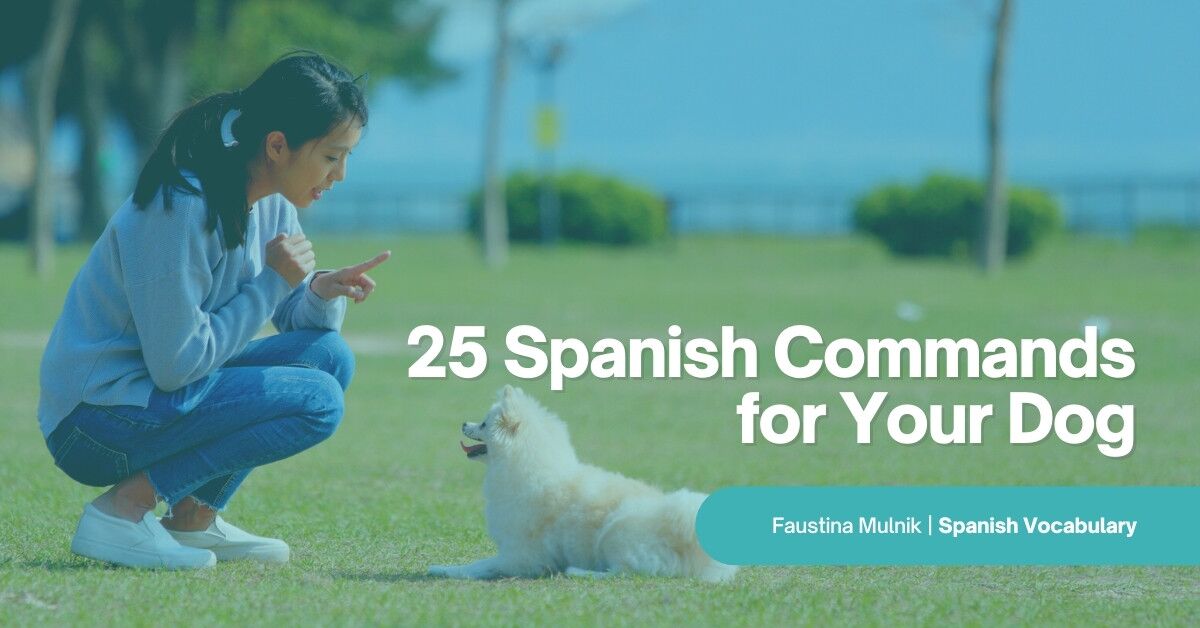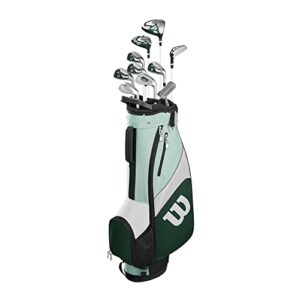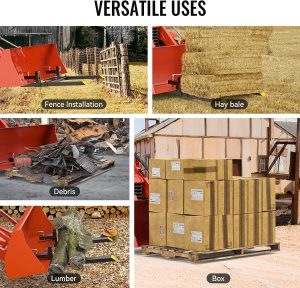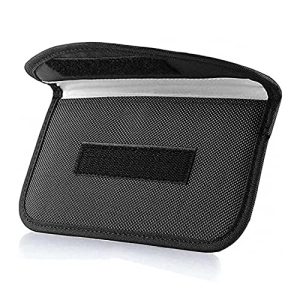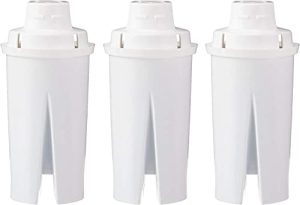Contents
Are you looking to enhance your communication with your furry friend? Look no further than “Feeding your Dog: A Guide to Spanish Commands”. This comprehensive guide provides you with all the essential phrases and commands you need to effectively communicate with your pup during mealtime. From simple requests like “sit” and “stay” to more complex actions like “roll over” and “beg,” this guide has got you covered. Say goodbye to language barriers and start building a stronger bond with your dog today!
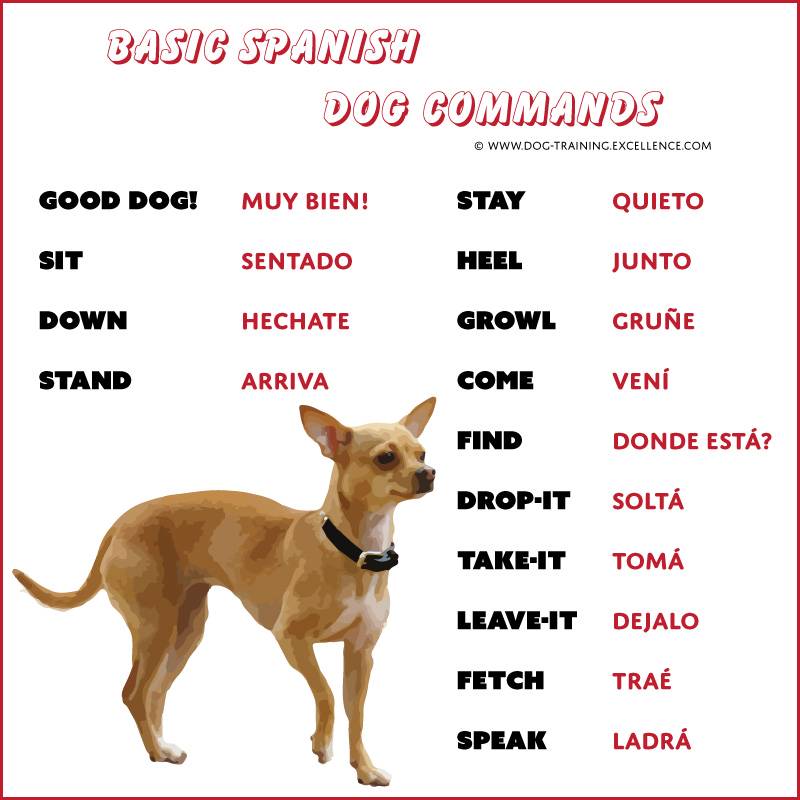
Basic Commands
When it comes to feeding your dog, it’s important to establish some basic commands to ensure a smooth and orderly mealtime experience. These commands will not only make feeding time easier for you, but they will also help your dog learn proper mealtime behavior. The following are basic commands that you can use in Spanish:
Sit (Siéntate)
The “sit” command is a foundational command that every dog should learn. It helps to create a sense of calm and control during mealtime. With this command, you can ask your dog to sit down before you place their food bowl in front of them. This simple act of sitting can help prevent your dog from jumping or lunging towards their food.
Stay (Quédate)
The “stay” command is crucial for maintaining control and order during mealtime. By teaching your dog to stay, you can ensure that they remain in one place until you give them the signal to start eating. This command is especially helpful if you have multiple dogs and want to feed them separately or if you need your dog to wait while you prepare their food.
Lie Down (Échate)
The “lie down” command is another useful command during mealtime. It encourages your dog to relax and stay calm while they eat. By teaching your dog to lie down, you can prevent them from rushing through their meal or becoming overly excited. This command can also be helpful if you need to clean up any spills or messes during feeding.
Meal Time Preparation
Mealtime preparation is an important part of ensuring that your dog’s feeding experience is enjoyable and hassle-free. By taking the time to prepare for mealtime, you can create a routine that helps your dog understand when it’s time to eat. The following are some essential preparations you should consider:
Get Ready (Prepárate)
Before you even begin preparing your dog’s meal, it’s important to let them know that it’s mealtime. Use the command “prepárate” (get ready) to signal to your dog that their meal is being prepared. This command can help them associate the word with the upcoming meal and get them excited for what’s to come.
Food Bowl (Cuenco de Comida)
Having a designated food bowl for your dog is essential for maintaining cleanliness and organization during mealtime. Make sure to use a clean food bowl every day and provide a bowl that is appropriate for your dog’s size. Using the command “cuenco de comida” (food bowl), you can direct your dog to the designated area where their food will be placed.
Water Bowl (Cuenco de Agua)
Alongside the food bowl, it is important to provide your dog with a fresh and easily accessible water source. Dogs need to stay hydrated, especially during mealtime. Use the command “cuenco de agua” (water bowl) to direct your dog to their water source. This will help them associate the command with their water bowl and encourage them to drink when needed.
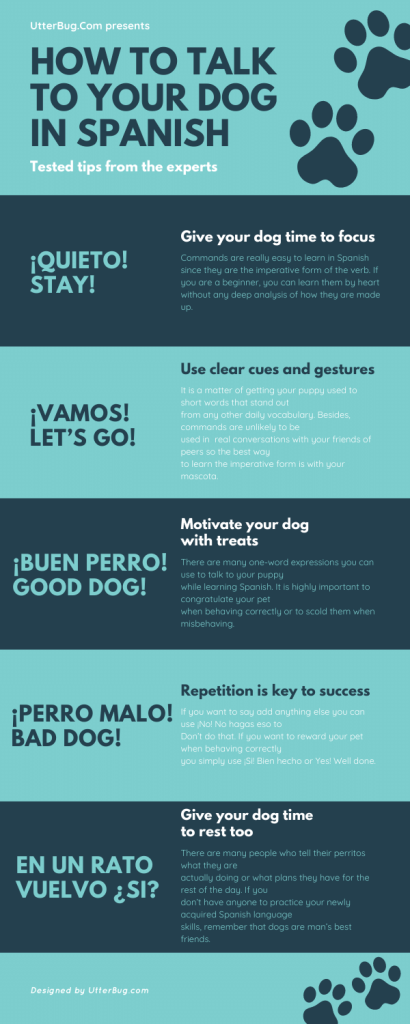
Feeding Instructions
Once the preparations have been made, it’s time to start feeding your dog. Feeding instructions are essential for ensuring that your dog gets the proper nutrition they need. Additionally, these instructions can help with portion control, behavior management, and overall mealtime etiquette. The following are some feeding instructions that you can use in Spanish:
Eat (Come)
The command “come” (eat) is used to encourage your dog to start eating their meal. Once you have placed their food in the bowl, use this command to signal that it’s time for them to enjoy their meal. This command can be especially useful if you have multiple dogs and want them to eat at the same time.
Drink (Bebe)
In addition to their meals, it’s important to remind your dog to stay hydrated. Using the command “bebe” (drink), you can encourage your dog to take a break from eating and have a drink from their water bowl. This command is particularly useful during long walks or hot weather when your dog needs extra hydration.
Wait (Espera)
The command “espera” (wait) is a valuable command to use during mealtime. This command teaches your dog patience and self-control, preventing them from rushing or jumping towards their food. By using this command, you can ensure that your dog waits until given the signal to start eating. This can be especially helpful if you need to add any supplements or medications to their food.
Portion Control
Portion control is an important aspect of your dog’s diet. It helps maintain a healthy weight, prevents overeating, and ensures that your dog is receiving the appropriate amount of nutrients. Depending on your dog’s age, size, and activity level, the following portion sizes can be used:
Small Portion (Porción Pequeña)
If you have a small breed or a dog with a low activity level, a small portion size may be appropriate. Use the command “porción pequeña” (small portion) to indicate that your dog’s meal is in a smaller quantity. This will help prevent overfeeding and keep your dog at a healthy weight.
Medium Portion (Porción Mediana)
A medium portion size is suitable for dogs with average activity levels and body weights. If your dog falls into this category, use the command “porción mediana” (medium portion) to indicate the appropriate amount of food for their meal. Remember to adjust the portion size based on your dog’s individual needs and any dietary restrictions.
Large Portion (Porción Grande)
For large breed dogs or those with high activity levels, a larger portion size may be necessary. Use the command “porción grande” (large portion) to let your dog know that they are receiving a larger quantity of food. However, it’s essential to monitor their weight and adjust the portion size accordingly to prevent obesity or health issues.
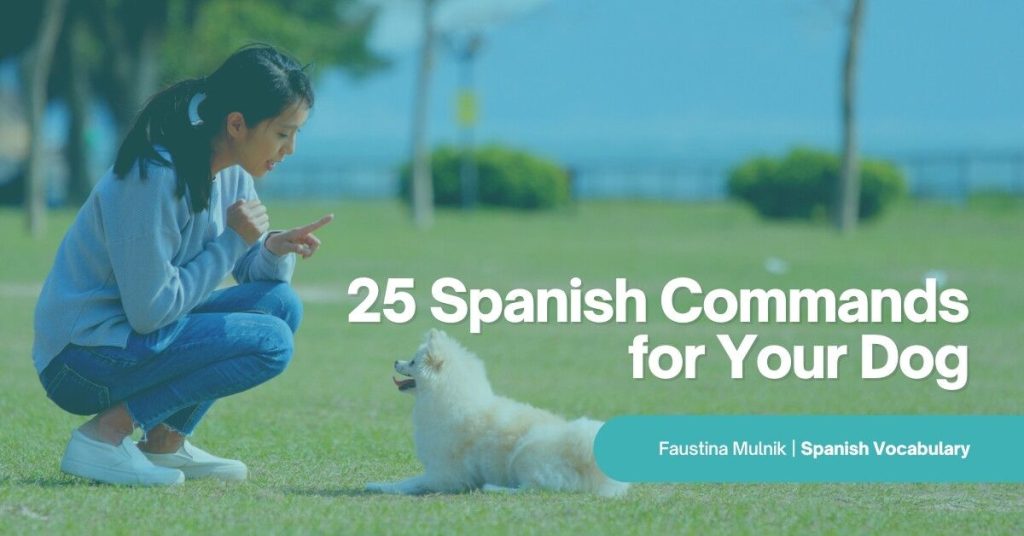
Special Diets
Sometimes, dogs require special diets due to various health conditions or dietary preferences. These diets can be recommended by a veterinarian or carefully prepared at home. The following are some special diets that your dog may require:
Veterinarian’s Prescription (Receta del Veterinario)
If your dog has a specific health condition or medical issue, your veterinarian may prescribe a special diet. These diets are designed to meet your dog’s specific nutritional needs and help manage their condition. It’s crucial to follow your vet’s instructions carefully and use the command “receta del veterinario” (veterinarian’s prescription) to indicate that your dog’s meal is custom-designed for their health needs.
Homemade Food (Comida Casera)
Some dog owners choose to prepare homemade meals for their furry friends. This can be a great option for dogs with dietary restrictions or those who prefer different protein sources. If you decide to feed your dog homemade food, use the command “comida casera” (homemade food) to let your dog know that their meal is prepared especially for them. It’s important to consult with a veterinary nutritionist to ensure that the homemade meals meet all of your dog’s nutritional requirements.
Raw Diet (Dieta Cruda)
Raw diets, also known as BARF (Biologically Appropriate Raw Food) diets, consist of raw meat, bones, and vegetables. Some dog owners prefer this diet for their pets, believing that it mimics the diet of wild canines. If you choose to feed your dog a raw diet, use the command “dieta cruda” (raw diet) to indicate that their meal is in its natural, uncooked form. Always consult with your vet and follow safe handling practices to prevent any potential health risks.
Food Types
Choosing the right type of food for your dog is crucial for their overall health and well-being. There are various options available, each with its own benefits and considerations. The following are different types of dog food:
Dry Food (Comida Seca)
Dry food, also known as kibble, is a popular and convenient choice for many dog owners. It is easy to store, has a longer shelf life, and promotes dental health by reducing tartar buildup. Use the command “comida seca” (dry food) to indicate that your dog’s meal consists of kibble. Remember to provide fresh water alongside dry food, as it can be dehydrating.
Wet Food (Comida Húmeda)
Wet food, also referred to as canned food, is a moist and flavorful option that can be more palatable for dogs with dental issues or those who are picky eaters. Use the command “comida húmeda” (wet food) to let your dog know that their meal is in a canned form. Keep in mind that wet food has a shorter shelf life once opened and should be stored properly to avoid spoilage.
Semi-Moist Food (Comida Semi-Húmeda)
Semi-moist food is a middle ground between dry and wet food, offering the convenience of kibble and the added moisture of canned food. It is often shaped like burgers or sausages and can be easily portioned. Use the command “comida semi-húmeda” (semi-moist food) to indicate that your dog’s meal is in this specific form. Be cautious as semi-moist food can be high in sugar and artificial additives.
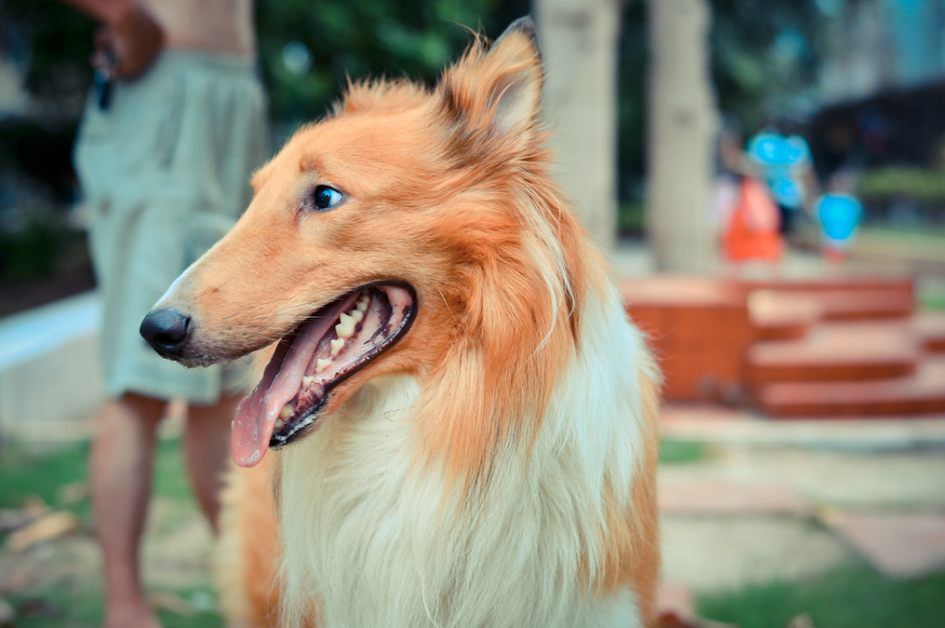
Training Treats
Training treats are a valuable tool for teaching your dog new commands and reinforcing positive behavior. These treats are small and low in calories, allowing you to reward your dog without overfeeding them. The following are considerations for training treats:
Reward (Recompensa)
Use the command “recompensa” (reward) to inform your dog that they will receive a training treat for their good behavior. This command helps your dog associate their positive actions with a treat and encourages them to continue behaving well. Make sure to use small, bite-sized treats that are easy to chew and won’t distract your dog from their training.
Good Boy (Buen Chico)
The phrase “buen chico” (good boy) is a common term used to praise and motivate your dog during training sessions. By using this phrase, you can positively reinforce your dog’s actions and let them know that they are doing well. Combine the phrase with a reward to create a positive association with the command or behavior you are teaching.
Training Session (Sesión de Entrenamiento)
Use the command “sesión de entrenamiento” (training session) to let your dog know that it’s time to focus and learn. This command helps them understand that treats will be involved, creating anticipation and enthusiasm for the upcoming training. Incorporate short and engaging sessions to keep your dog’s attention and make the training experience enjoyable for both of you.
Feeding Schedule
Establishing a feeding schedule for your dog is an essential part of their routine and ensures that they receive consistent meals throughout the day. Having a regular feeding schedule can help with digestion, behavior management, and overall well-being. Consider the following factors when creating a feeding schedule:
Morning (Mañana)
Depending on your dog’s age and activity level, they may require a meal in the morning. Use the command “mañana” (morning) to inform your dog that it’s time for breakfast. Morning meals can help provide energy for the day ahead and prevent hunger-induced behavior issues.
Evening (Noche)
An evening meal is another crucial part of your dog’s feeding schedule. Use the command “noche” (evening) to let your dog know that it’s time for dinner. An evening meal allows your dog to replenish their energy levels after a day of activity and prepares them for a restful night’s sleep.
Frequency (Frecuencia)
The frequency of your dog’s meals will depend on their age, size, and specific dietary needs. Puppies and younger dogs generally require more frequent meals, while adult dogs can thrive on two meals per day. Use the command “frecuencia” (frequency) to indicate how often your dog should expect their meals. It’s important to maintain consistency to avoid digestive issues and ensure proper nutrition.

Feeding Etiquette
Teaching your dog proper feeding etiquette is not only beneficial for mealtime management but also for their overall behavior. Establishing boundaries and expectations during mealtime can help improve manners and prevent unwanted behaviors. Consider the following tips for teaching feeding etiquette:
No Begging (Sin Pedir)
Begging is a common behavior that many dogs display during mealtime. It can be difficult to resist those adorable puppy eyes, but allowing begging behavior can lead to unwanted habits and obesity. Use the command “sin pedir” (no begging) to discourage your dog from begging for food. Reinforce this command by rewarding them when they refrain from begging and exhibiting patience.
No Stealing (Sin Robar)
Stealing food from the counter or table can be a frustrating and potentially dangerous behavior. Use the command “sin robar” (no stealing) to make it clear to your dog that taking food without permission is not allowed. Consistently reinforce this command by redirecting their attention to appropriate toys or treats and rewarding them for good behavior.
Table Manners (Modales en la Mesa)
Teaching your dog proper table manners is essential for a peaceful and enjoyable mealtime. Use the command “modales en la mesa” (table manners) to remind your dog to stay calm and well-behaved while you eat. Encourage them to lie down or stay in their designated area during mealtimes. Reward them for good behavior and gradually increase the duration of their table manners training.
Common Issues
While feeding your dog, you may encounter common issues that require attention and care. It’s important to address these issues promptly to ensure your dog’s health and well-being. Here are some common issues and how to handle them:
Allergies (Alergias)
Dogs, like humans, can have allergies to certain foods. If you suspect that your dog may have food allergies, consult with your vet to determine the best course of action. They may recommend an elimination diet or suggest specific hypoallergenic foods. By addressing your dog’s allergies, you can help alleviate discomfort and promote overall health.
Obesity (Obesidad)
Obesity is a significant health concern for dogs and can lead to various health problems. If your dog is overweight, consult with your vet to develop a proper weight management plan. This may involve adjusting portion sizes, incorporating more exercise, and offering low-calorie treats. Use the portion control commands and be mindful of your dog’s overall caloric intake to prevent obesity.
Sensitive Stomach (Estómago Sensible)
Some dogs have sensitive stomachs and may experience digestive issues or food intolerances. If your dog shows signs of a sensitive stomach, such as vomiting or diarrhea, it’s essential to address the issue. Consult with your vet to determine the underlying cause and switch to a gentle, easily digestible diet if necessary. Use the feeding instructions and consider special diets that cater to sensitive stomachs.
In conclusion, feeding your dog requires proper communication, preparation, and an understanding of their individual needs. By using these basic commands, mealtime preparations, feeding instructions, portion control, and addressing common issues, you can ensure that your dog’s mealtimes are enjoyable and beneficial for their overall health. Remember to consult with your vet for personalized advice and make adjustments as needed. Happy feeding!

